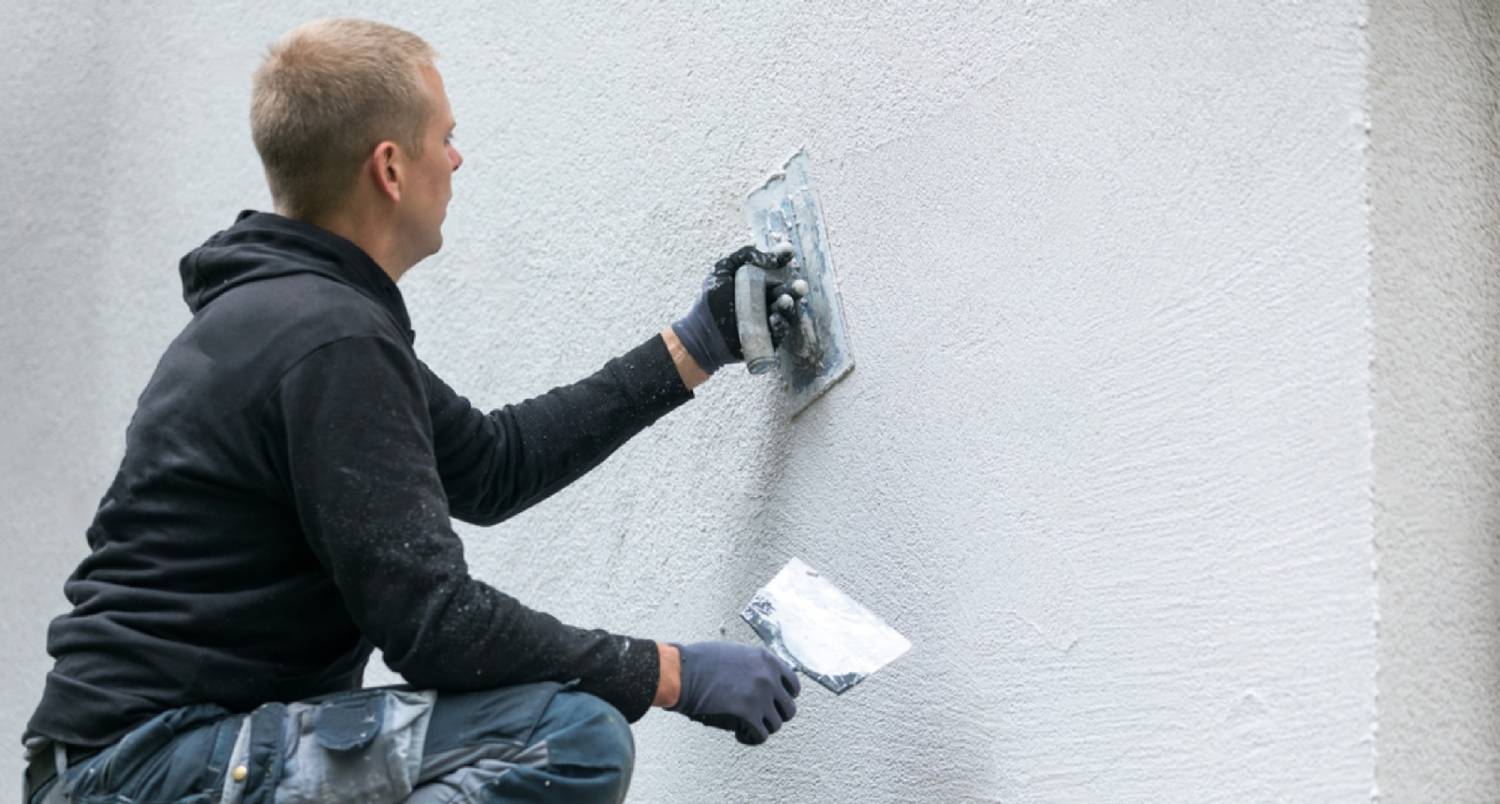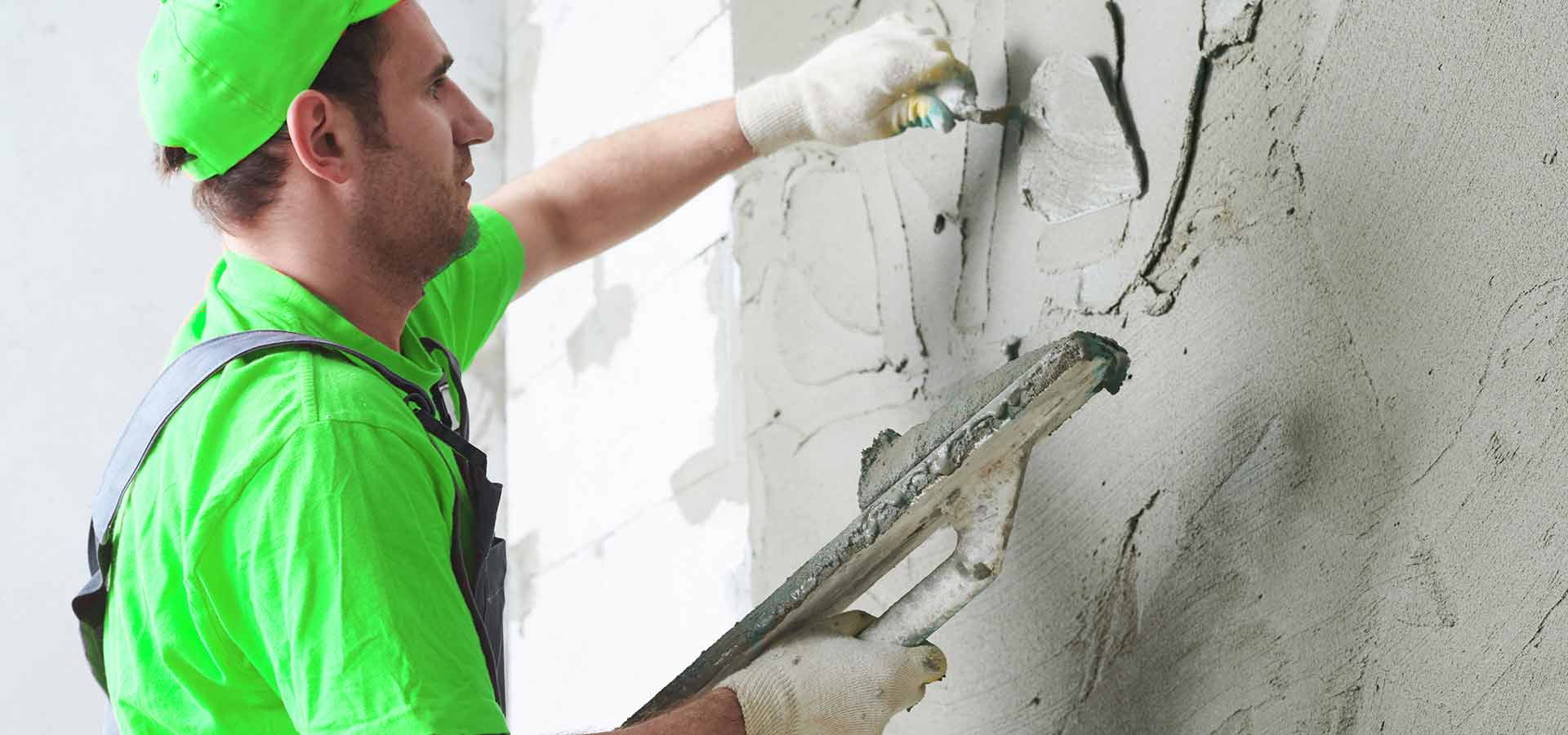Professional Guidance on Working With the Right Stucco Contractor for Quality Finishes
Wiki Article
Checking Out the Versatility of Stucco in Modern Style
Stucco has actually long been recognized for its visual allure and adaptability, yet its duty in modern architecture warrants a more detailed exam. This product, traditionally significant in various building activities, now serves as a functional remedy that boosts both the aesthetic and practical facets of contemporary frameworks. By exploring its ingenious applications, from striking exteriors to energy-efficient layouts, one can appreciate just how stucco is redefining the limits of building expression. This conversation will certainly discover not only its transformative possibility however additionally the obstacles it deals with in an advancing sector.Historic Importance of Stucco
The historical importance of stucco is profound, as it has played a crucial duty in building techniques across various cultures for centuries. Coming from old worlds, stucco was used by the Egyptians and Greeks as a durable and functional surface for both indoor and outside surfaces. Its flexibility to different climates and ability to mimic extra costly materials made it a favored selection.In the Roman age, stucco became a primary decorative component, utilized thoroughly in public buildings, rental properties, and temples. The Romans fine-tuned the application techniques, enabling elaborate styles and relief sculptures. Throughout the Renaissance, stucco experienced a resurgence, particularly in Italy, where it was utilized in ornamental information and fancy exteriors, showcasing the creativity of the duration.

Modern Applications in Style
Stucco has located restored importance in modern-day style as a result of its flexibility and aesthetic allure (stucco contractor). This typical product is increasingly utilized in modern design, connecting the space between contemporary and classic appearances. Developers and architects value stucco for its adaptability, enabling it to be used in numerous designs-- from minimalist frameworks to specify Mediterranean styles
In domestic projects, stucco offers a clean, seamless coating that improves the aesthetic communication of exteriors. Its capability to comply with various forms and surface areas makes it a suitable option for both new constructions and restoration projects. Furthermore, stucco's resilience and reduced maintenance needs contribute to its growing appeal in city settings, where durable products are necessary.
Business applications have also accepted stucco, with lots of companies going with this material to produce inviting and unique stores. Making use of stucco in public buildings, such as institutions and community facilities, showcases its potential for developing visually appealing settings while supplying outstanding insulation homes.
Shade and Texture Developments
Exploring shade and structure developments in stucco has actually opened brand-new avenues for designers and designers, enhancing the product's aesthetic influence in contemporary building and construction. Recent innovations in pigment technology have enabled a wider range of colors, enabling designers to produce striking exteriors that integrate flawlessly with their surroundings or stand apart as vibrant architectural statements. This adaptability in color option provides engineers the capacity to evoke details emotional reactions and harmonize with local aesthetic appeals.Texture developments have in a similar way transformed stucco applications. Methods such as shoveling, spraying, and marking have actually resulted in varied surface finishes, ranging from smooth and improved to responsive and sturdy. These variations not just add to the structure's personality however also play a critical function in light interaction, boosting the visual depth and dimensionality of surfaces.
In addition, the introduction of artificial stucco alternatives has increased design possibilities, providing enhanced sturdiness and climate resistance while preserving aesthetic allure. As engineers remain to experiment with cutting-edge color schemes and distinctive finishes, stucco remains a crucial component in modern architecture, showcasing the product's versatility and classic significance in contemporary style.
Sustainability and Energy Performance
Developments in shade and appearance have not just improved the visual charm of stucco yet also led the way for better concentrate on sustainability and Check This Out energy performance in modern-day style. As environmental concerns become significantly popular, the building and construction market is turning its focus to materials that contribute positively to environmental balance.Stucco, composed primarily of natural materials such as concrete, lime, and sand, offers a lasting alternative to more resource-intensive building materials. Its longevity and longevity reduce the requirement for constant replacements, consequently decreasing waste and resource intake gradually. Contemporary stucco formulas typically consist of energy-efficient ingredients that improve insulation homes, reducing heating and cooling prices for structures.
The reflective qualities of stucco can also be engineered to alleviate warm absorption, adding to cooler interior settings and much less reliance on artificial climate control systems. By advertising energy conservation and decreasing the carbon impact of frameworks, stucco straightens with the principles of sustainable architecture. As contractors and architects embrace eco-friendly practices and innovative methods, stucco stands out as a flexible and accountable option in contemporary style.

Instance Studies of Stucco Projects
The versatility of stucco as a building material is exemplified in different successful building tasks that highlight its functional and visual benefits. One remarkable instance is the restoration of the historical Casa de la Guerra in Santa Barbara, California. Making use of stucco not just maintained the structure's Spanish Colonial Revival design however also enhanced its longevity and weather resistance, ensuring longevity while preserving building stability.
An additional engaging case is the modern household task, the Cactus Residence in Scottsdale, Arizona. stucco contractor. This striking home features a smooth stucco finish that integrates with the surrounding desert landscape. The stucco's light shade reflects warm, adding to power efficiency, while the textured surface areas add aesthetic interest
Furthermore, the Kings Cross redevelopment in London showcases the flexibility of stucco in city settings. The application of stucco on modern mixed-use structures produces a cohesive aesthetic that values historical context while accepting contemporary layout concepts.
These study show just how stucco can offer different building purposes, from preservation and power performance to visual enhancement, making it a flexible selection in modern-day design.
Verdict
 In conclusion, stucco's historical importance and modern versatility make it a beneficial product in modern architecture. As demonstrated through numerous instance research studies, stucco proceeds to play a vital function in shaping the building landscape of the modern period.
In conclusion, stucco's historical importance and modern versatility make it a beneficial product in modern architecture. As demonstrated through numerous instance research studies, stucco proceeds to play a vital function in shaping the building landscape of the modern period.
In verdict, stucco's historic importance and contemporary adaptability make it a useful material in contemporary architecture.
Report this wiki page